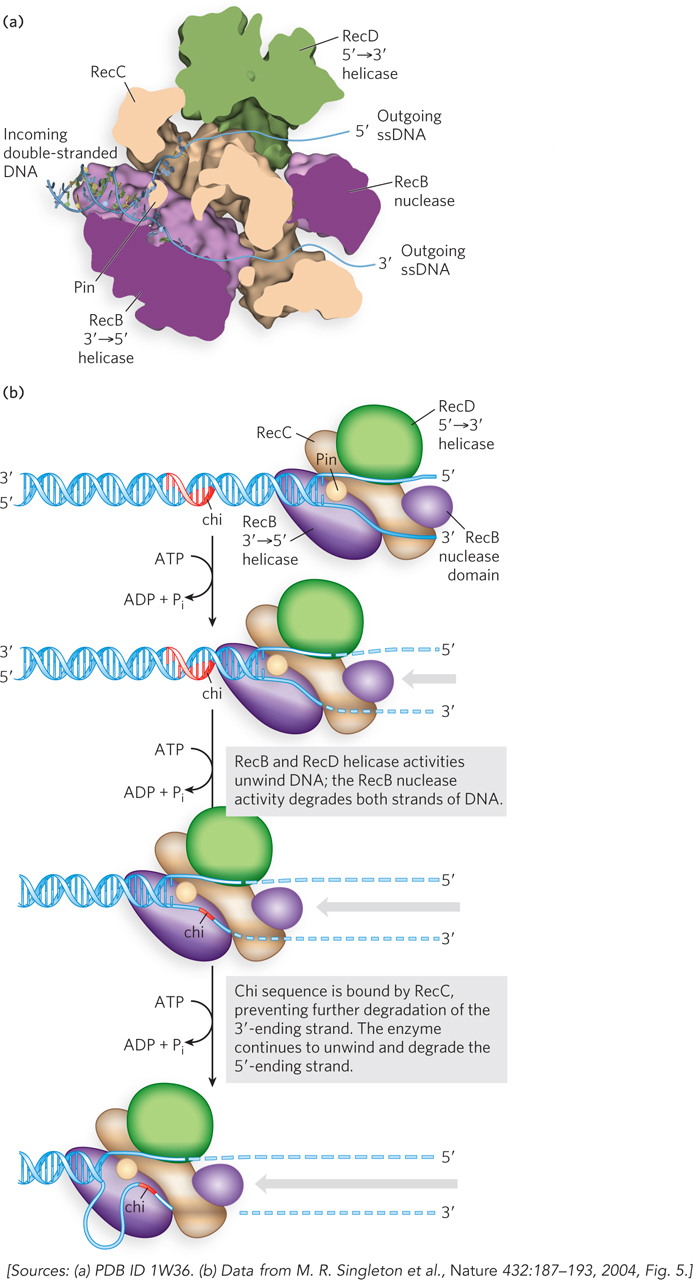
The RecBCD helicase/nuclease. (a) The structure of the RecBCD enzyme. (b) Activities of the RecBCD enzyme at a DNA end. The RecB and RecD subunits travel along the DNA, a process that requires ATP; RecB degrades both strands as the complex travels, cleaving the 3′-ending strand more often than the 5′-ending strand. The RecC subunit has a protrusion called a pin that facilitates separation of the DNA strands. When a chi site is encountered on the 3′-ending strand, the RecC subunit binds to it, halting the advance of this strand through the complex. Degradation of the 5′-ending strand continues as the 3′-ending strand is looped out, eventually creating a 3′ single-